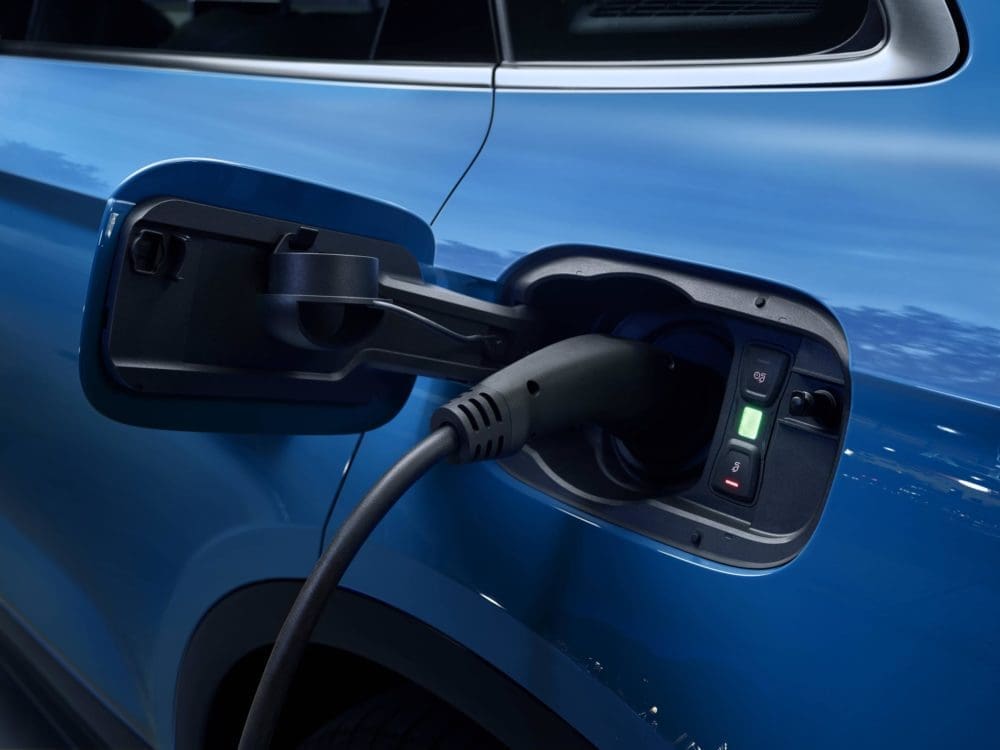



The new drive concept combines a 2.0 TFSI four-cylinder, turbocharged petrol engine producing 249 bhp and 272.9 lbft of torque with an electric motor. The permanently excited synchronous motor (PSM) has a peak output of 105 kW and peak torque of 258.1 lb ft. It and the separating clutch are integrated into the seven-speed S tronic, which uses ultra technology to transfer the drive torque to the quattro drivetrain. Overall, the hybrid SUV has a system output of 362 bhp and total torque of 368.8 lb ft just above idle, namely from 1,250 rpm. Acceleration from 0 to 62mph takes 5.3 seconds; top speed is 148mph. According to the standard for plug-in hybrid vehicles, combined fuel consumption according to the WLTP cycle is 113mpg, corresponding to 49 grams CO2 per km.
The SUV’s lithium-ion battery is located under the luggage compartment floor. It is made up of 104 prismatic cells and stores 14.1 kWh of energy with a voltage of 381 volts. For optimal temperature control, its cooling loop is connected to both the coolant loop for the climate control system and the low-temperature cooling loop into which the electric motor and power electronics are also integrated. The climate control system uses a highly efficient heat pump that pools the waste heat from the high-voltage components. With 1 kW of electrical energy, it can generate up to 3 kW of thermal heating output. That makes the car more efficient and also provides a more comfortable climate for the occupants.
The Q5 55 TFSI e marks the first time that the all-wheel drive with ultra technology is used in combination with an electric motor. The all-wheel drive system’s intelligent control works predictively, always looking ahead by means of sensors and the continuous analysis of the data collected on driving dynamics and driver behaviour. The quattro all-wheel drive system is thus always ready when needed. At low loads and a sufficient coefficient of friction between the wheels and the road surface, the transmission of power to the rear wheels is deactivated. The drivetrain then functions as a front-wheel drive system. All-wheel drive is deactivated whenever it is not needed, but it remains available at all times. Fast, automatic activation of the all-wheel drive system follows a three-stage strategy: proactive, predictive and reactive. By networking quattro drive with Audi drive select, drivers can adjust not just the character of the engine, but also the all-wheel-drive properties to suit their individual preferences.
There are three driving modes from which to choose.
Hybrid mode is activated automatically together with route guidance in the navigation system. It can also be activated manually using the Mode button. In this mode, the battery charge is optimally distributed over the route to reduce fuel consumption, with primarily electric driving in urban areas and stop-and-go traffic. The system chooses between freewheeling with the engine switched off and coasting recuperation. Coasting recuperation can recover up to 25 kW of power. The electric motor is responsible for all light braking up to 0.1 g, i.e. the majority of braking in everyday driving. A maximum of 80 kW of electrical energy are generated via braking recuperation at a deceleration of up to 0.2 g. The disc brakes are used for more power deceleration. If route guidance is active in the MMI navigation system, the predictive operating strategy attempts to drive the last urban segment of the route all-electrically and arrive at the destination with the drive battery nearly empty. The control function is based on a large amount of data. These include online traffic information, distance to the destination, the route profile of the chosen route, precise information about immediate surroundings from the navigation data, such as speed limits, types of roads, uphill and downhill slopes and the latest data from the onboard sensors.
Besides Hybrid mode, the driver can also choose between EV and Battery Hold modes. In EV mode, the car is driven exclusively electrically as long as the driver does not depress the accelerator past a variable, perceptible pressure point. EV mode is the base setting each time the vehicle is started. In Battery Hold mode, battery capacity is held at the current level.
Charge management: the myAudi app
The myAudi app allows customers to use the services from the Audi connect portfolio on their smartphones. The app can be used to check the battery and range status, start the charging process, program the charge timer and view the charge and consumption statistics. Furthermore, the route planners in both the app and the MMI navigation in the car show charging stations.
Another function of the myAudi app is preheating/precooling prior to departure. In this case the climate control system compressor and the auxiliary heater in the car are powered electrically. The customer can determine exactly how the interior should be heated or cooled while the battery is being charged. Depending on the optional equipment chosen, the same applies to the seat and steering wheel heating, heating of the windscreen, rear window and mirrors, and the seat cooling.
© Motorworld Media 2023
Registered Office: 4 Capricorn Centre, Cranes Farm Road, Basildon, Essex. SS14 3JJ
Company Number: 8818356
Website designed by Steve Dawson